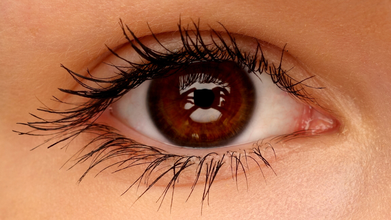- Health Conditions A-Z
- Health & Wellness
- Nutrition
- Fitness
- Health News
- Ayurveda
- Videos
- Medicine A-Z
- Parenting
- Web Stories
Can Nootropics Get You An Extra Edge At Work?

Credit: Canva
A new wave of cognitive enhancers known as nootropics is gaining popularity, with products like Thesis being marketed as 'Nature’s Adderall.' The word itself is derived from ancient Greek, combining noos ( mind) and tropen ( turning, bending or tending towards). So how exactly does it boost cognition, and how does it impact a person's overall functioning?
'Smart Drugs'
Nootropics, also referred to as smart drugs, are substances that are said to enhance cognitive functions such as memory, learning, and concentration. Unlike stimulants that act directly on neurotransmitters, nootropics improve the brain's supply of glucose and oxygen, protect neural tissues from neurotoxicity, and promote blood flow to the brain.
The term 'nootropic' was first coined in the early 1970s by Cornelius E. Giurgea to describe substances that activate cognitive functions, particularly memory and learning, especially in cases where these functions are compromised. Instead of acting as receptor ligands or neurotransmitter releasers, nootropics work by influencing neuronal metabolism in the central nervous system.
A review published in the National Library of Medicine classifies nootropics into four subgroups: classical nootropic compounds, substances that increase brain metabolism, cholinergics, and plant-based extracts with nootropic effects. These groups highlight the varied ways in which nootropics can impact brain health.
Natural Nootropic
One such natural nootropic gaining attention is Kanna, a South African plant said to produce empathogenic effects — substances that create warm, euphoric feelings similar to those induced by ecstasy. "There are over 35 known alkaloids in Kanna, which have various physiological effects on the body," says Stephanie Wang, founder and CEO of KA! Empathogenics. "These alkaloids not only elevate mood and promote feelings of well-being but also enhance cognitive abilities and support brain health."Medicinal Use Of Nootropics
In addition to natural supplements like Kanna, nootropics are also being studied for their potential use in treating acute psychoorganic syndrome (POS), a condition associated with early brain damage that manifests as memory loss, mental retardation, and changes in consciousness. POS can be triggered by brain trauma, infections, stroke, or toxic exposure to substances like alcohol or drugs.
While POS is generally considered reversible, it can sometimes progress to dementia, particularly in severe cases. Nootropics are also used for chronic cognitive impairments such as memory loss, age-related mental decline, and attention deficits caused by fatigue or exhaustion. Children with minimal brain dysfunction syndrome and patients with encephalopathy have also been prescribed nootropics in some cases.
Despite their rising popularity, experts remain cautious about the effectiveness of nootropics in treating severe cognitive impairments. While they show promise in mild cases, their impact on advanced dementia remains unclear. Furthermore, the long-term effects of these cognitive enhancers are still under investigation, raising questions about their safety and efficacy as a widespread solution for brain health.
ALSO READ: Is There A Right Way To Absorb Vitamin D From Sun?
'Your Calves Are Your Second Heart' Doctor Reveals What Happens When You Lack Daily Movement

(Credit-Canva)
Many people have a one-dimensional view of their health, ‘if I eat healthy I don’t have to exercise as much’ or ‘since I exercise a lot, I can eat whatever I want’ but it doesn’t work like that. Everything we do and all the organs in our body are interdependent. So which body part does our heart depend on?
Most people only think about their main heart when they consider blood circulation, but there's a lesser-known helper: your calf muscles. These muscles, located in the back of your lower legs, act like a "second heart."
In a recent post, dietician Ms Manpreet Kalra, explained how important calf muscles are to our heart health.
She explained that when you walk, run, or simply move your ankles, your calf muscles squeeze. This squeezing action pushes the blood that has collected in your lower legs and feet back up towards your main heart and the rest of your body. It's a vital part of healthy circulation, preventing blood from just pooling in your legs due to gravity.
The Danger of Sitting Still
If you spend long hours sitting down—whether at a desk, on a plane, or watching TV—you essentially "shut down" your second heart. When your calf muscles aren't moving, they stop doing their job of pumping blood back up. This lack of movement leads to several problems:
Poor Circulation
When your calf muscles are inactive, they stop pumping, causing blood to start pooling in your lower legs and feet. Gravity takes over, meaning the blood has a hard time making the trip back up to your heart, slowing everything down.
Swelling and Fatigue
As blood and fluids linger in your legs, you might notice they feel heavy, tired, or appear visibly swollen. This feeling of dragging your feet is a direct result of your calves not properly assisting your body’s circulatory system.
Toxin Buildup
Normally, your blood removes waste, but when it slows down, toxins build up in your inactive muscles. These waste products are not cleaned out efficiently, which can contribute to muscle discomfort and general poor health over time.
Increased Risk of Blood Clots
The biggest danger is an increased risk of Deep Vein Thrombosis (DVT), which is when a blood clot forms in a deep vein, usually in the legs. These clots can be very dangerous if they break loose and travel to the lungs.
Simple Ways to Activate Your "Second Heart"
The good news is that keeping your calf muscles active is easy and requires only small changes to your daily routine. Movement is the key to keeping your circulation flowing and your heart safe. Here are simple actions you can take:
Move Regularly
Try to walk or stretch for a few minutes every 45 to 60 minutes if you have a desk job. Even standing up and sitting down a few times helps.
Do Calf Raises
While standing, rise up onto your toes and then lower your heels back down. Doing this simple exercise daily—even while brushing your teeth—is great for strengthening and activating your calves.
Change Positions
Avoid sitting with your legs crossed for long periods, as this can squeeze veins and restrict blood flow.
By taking care of your calves, you're not just taking care of your legs—you're helping your whole circulatory system and protecting your main heart!
This Sign Of Alzheimer's Disease That Can Show Up 25 Years Before Diagnosis: Study Finds

(Credit-Canva)
Dementia is more common than you think. According to the Alzheimer’s Disease International, there were over 55 million people in the world living with dementia in 2020. According to the organization, this number is said to double every year for 20 years, and this number is said to reach 78 million in 2030.
There are many different types of dementia, one of which is Alzheimer’s disease. It is the most common form of dementia. While there is no cure for dementia, catching it early can help people manage the condition. But with the vague symptoms of Alzheimer’s, early diagnosis is difficult.
Researchers have found a possible new sign of Alzheimer's disease that could show up incredibly early, which is poor spatial navigation. Think of spatial navigation as your brain's ability to figure out where you are and how to get where you're going, your internal GPS.
This difficulty could appear up to 25 years before the more commonly known symptoms, like losing your memory. Finding a warning sign this early is a huge step because getting a diagnosis sooner is vital for beginning treatment and for scientists working to find ways to prevent the disease.
What Does Knowing Your Surrounding Mean?
A team of scientists from the University College London (UCL) conducted a study to look for these early signs. They worked with around 100 people between the ages of 43 and 66. These people were chosen because they had a higher risk of getting Alzheimer's later in life. This risk was due to things like having a family member with the disease, carrying a specific gene (called the APOE-ε4 allele) linked to higher risk, or having risk factors in their lifestyle.
An important point to note was that every single person in the study showed no signs of Alzheimer's, they were perfectly healthy and were about 25 years younger than the age doctors would typically expect dementia to start for them.
To test their navigation skills, the participants put on virtual reality (VR) headsets and were asked to find their way around a computer-generated environment. The results showed that the people who were at higher risk for Alzheimer's had a much harder time completing the VR navigation task. They essentially got lost or struggled more to find their way.
Early Sign Of Alzheimer’s Disease
Importantly, these same people did just fine on other types of tests, including those that check memory. This suggests that having trouble with spatial navigation could be one of the very first things to go wrong in the brain, years or even decades before you start forgetting things.
The experts said that this change might be the earliest possible signal that someone is starting to move from being healthy to showing the first signs of the disease. The researchers are now planning to turn this VR test into a tool that doctors could use to help diagnose the disease earlier.
explained that these findings are exciting for two main reasons. First, they allow doctors to spot the start of Alzheimer's much sooner, which is critical for making treatments work better. Second, the VR test is based on how special cells in the brain in an area called the temporal lobe handle space and location.
This means the test helps connect the dots between tiny changes in the brain's cells and the actual symptoms people experience. This connection is a huge barrier in current Alzheimer's research.
The study also noticed that men showed a bigger drop in their spatial navigation skills than women did. This suggests that more research is needed to understand why men and women might be affected differently by Alzheimer's.
The Alzheimer's Society agreed, emphasizing that early and accurate diagnosis is essential, and this study clearly shows that problems with navigation could be one of the very first signs to watch out for.
What is the 20-20-20 Rule For Healthy Eyes?

Credits: Canva
So far, we know the 6-6-6 rule for walking, but there is something new for eye health too. It is called the 20-20-20 rule. In our day to day lives, our screen time has increased, in fact, screens have become an integral part of our life, which means we must take extra care of our eye health and this 20-20-20 rule will help you.
What Is 20-20-20 Rule?
This rule says that for every 20 minute that you spend on looking at the screen, you must take a 20 second break to look at something 20 feet away.
While you won't know how far is 20 feet from your desk, the key is not to actually stand 20 feet apart, but to take a break from your screen and be far from it, especially if you have a smaller work space and don't have the time to roam around.
You can set an alarm every 20 minutes to remind yourself for a well deserving break that you deserve.
Is the 20-20-20 Rule Supported By Research?
The American Academy of Ophthalmology says that looking at digital devices won't necessarily damage your eyesight, but it can cause strain and unpleasant symptoms. Humans usually blink around 15 times each minute, and when we stare at our screens, the frequency decreases half or a third. This is why our eyes feel dry, irritated, and we feel that our eyes are getting tired.
What Happens When You Strain Your Eye?
If you have an eyestrain, you may experience pain, tiredness, itching, burning of your eyes. Furthermore, you may experience these following symptoms:
- dry eyes
- watery eyes
- blurred vision
- double vision
- headaches
- soreness in the neck, shoulders, or back
- sensitivity to light
- difficulty concentrating
- difficulty keeping eyes open
What Can You Do To Avoid Straining Your Eyes?
Maintain proper distance: Sit about 25 inches (roughly an arm’s length) away from your screen and position it slightly below eye level.
Cut the glare: Use a matte screen filter or adjust your lighting to reduce reflections.
Take regular breaks: Follow the 20-20-20 rule — every 20 minutes, look at something 20 feet away for at least 20 seconds.
Keep your eyes moist: Use over-the-counter lubricating eye drops and consider a humidifier if the air feels dry.
Blink more often: Frequent blinking helps keep your eyes naturally lubricated.
Adjust brightness: Match your screen’s brightness to the surrounding light to minimize strain.
Clean your screens: Dust and fingerprints can make it harder to see and increase eye fatigue — wipe them regularly.
Give contacts a rest: Alternate between contact lenses and glasses to reduce dryness and irritation.
Follow lens hygiene: Always wash your hands before handling contacts and avoid sleeping in them to prevent infections.
© 2024 Bennett, Coleman & Company Limited

